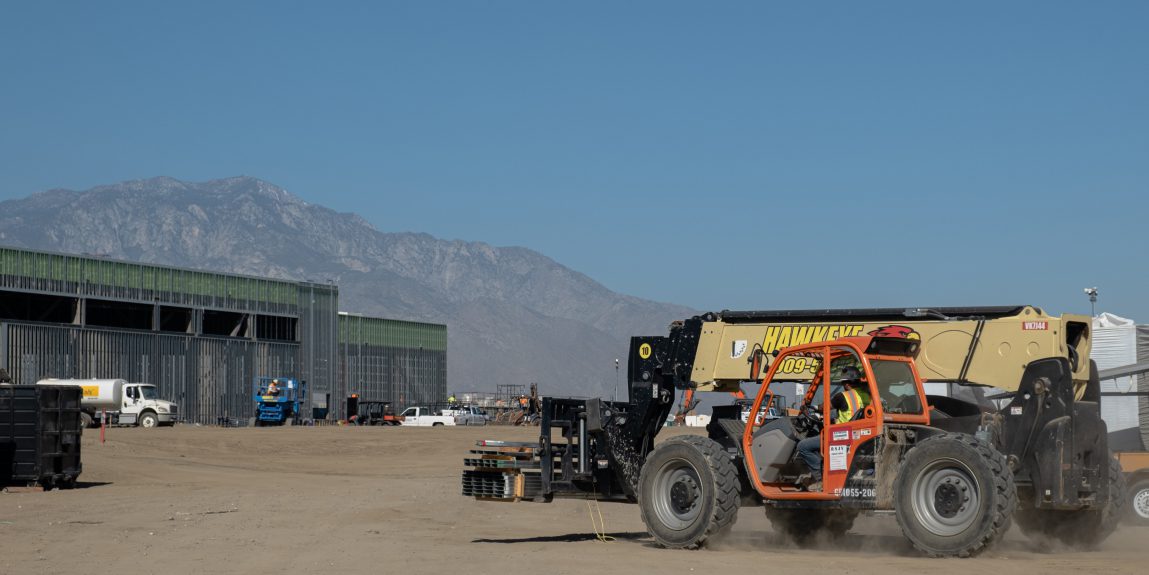

With the vast majority of fleets using telematics, it is clear that this technology is taking the fleet management industry by storm. Construction companies can say goodbye to guesswork and hello to productivity and cost savings when it comes to managing their off-road fleet vehicles and equipment.
Telematics is a cutting-edge technology useful for monitoring and controlling fleets, including vehicles, machinery, and equipment. This helps increase efficiency and safety and reduce operating costs and equipment challenges.
Let’s discuss what telematics is, how to use this innovative technology, and how it’s beneficial for managing an off-road fleet.
Telecommunications and informatics are the cornerstones of telematics in tracking off-road fleet equipment.
The technology consists of a global positioning system (GPS) and real-time data collection analyzing equipment location, speed, engine performance, and other possible metrics relevant to the specifics of a machine.
Fleet managers can receive real-time notifications which help diagnose a problem as it occurs or use the data to make informed decisions in the future. How do telematics devices work?
Telematics devices are placed on off-road equipment and use satellite and telecommunications to transfer the data to a fleet manager, regardless of location. This helps increase awareness of the equipment’s location, use, and performance, even remotely.
Telematics is beneficial for increasing efficiency, reducing operating costs, and increasing driver safety. Here are some examples of how telematics is used:
Here are the main benefits of using telematics to track off-road fleet equipment.
With the ability to track and monitor equipment performance, identify idle time, understand operator performance, and schedule maintenance, telematics provides the inside scoop on the job site.
This helps fleet managers narrow in on what successes and changes exist, supporting the ability to make informed decisions in the long run.
Telematics tracks the location of off-road equipment regardless of its location. This is beneficial for supporting resource allocation, route optimization, and minimizing downtime and theft.
Especially for rental depots, fleet managers and business owners can keep tabs on their equipment from departure to return. It is a level of accountability and transparency that allows communication between the equipment, contractor, and fleet manager.
Telematics can monitor maintenance schedules and diagnose problems in real-time. With valuable insights on engine performance, fluid levels, diagnostic codes, and fuel management, fleet managers can address challenges as they arise, potentially preventing unwanted and costly repairs in the future.
A benefit to using telematics data is the ability to gain insightful information about how wasteful the construction process can be. This is useful for construction businesses making decisions to reduce their carbon footprint by revealing opportunities to decrease idle time and air pollution.
Also, monitoring data makes it easier for the fleet manager to change routes to reduce unnecessary downtime.
Telematics technology is equipped to understand local, federal, and site-specific regulations and compliance. This helps ensure that the operator is safe. Data insights can reveal opportunities for training on how to make the job site safer.
Follow this helpful process to ensure that the telematics technology is not only implemented correctly but used in the right way.
Implementing a new telematics system, or any new software for that matter, can be tricky. It might require a new process and set of to-do’s. As a result, it is important to define an implementation plan before integration.
Understand your company’s goals for using telematics. For example, is your goal to track fuel efficiency, equipment location, use statistics, maintenance costs, or all of the above?
Defining critical objectives from the start will help construction companies select the best system and customize it to meet both the needs of the business and the target customer.
With a wide selection of telematics software to choose from, select one that meets your needs. Check to make sure that the system tracks off-road equipment and research to find any usage limitations.
Other features to watch out for include GPS tracking, engine diagnostics, equipment health monitoring, and built-in analysis of operator behavior. Also, consider how this system and software can contribute to reliability, data analysis capabilities, security, data storage, and customer support.
Now that you have selected your telematics system, work with the provider to install the necessary hardware for the off-road equipment. The hardware will include some sort of GPS receiver and a diagnostics unit.
Enlist the help of professionals so the installation is completed right the first time. This is also important for avoiding equipment damage.
Now, it’s time for the best part — data analysis. After installation, collect and monitor the trends and patterns of off-road equipment use. Circle back to those pre-established key performance indicators and check the idle time, equipment health, and operator behavior.
This information will help to inform decisions, optimize performances, and keep equipment running smoothly.
Last but certainly not least, use the information you have gained to promote and increase your company’s safety measures. Consider limiting equipment to a certain geographic location such as your rental depot or construction site, or monitor operator behavior for training opportunities.
The difference is simple. Vehicle and equipment tracking is limited to location monitoring, whereas telematics offers several more useful services for fleet managers and business owners.
Telematics collects valuable data, manages individual operators, increases productivity, reduces costs, and improves customer service with accuracy.
The use of telematics to track off-road fleet equipment produces several benefits for construction companies. Not only does telematics help monitor fleet location and performance, but it can also analyze operator behavior, reduce the chance of theft, and keep to a maintenance schedule.
Invest in the future of your fleet. Request a demo with Trackunit today.


Be first to hear about product launches, updates, and industry insights